3 Ways to Use Conditioner for Your Natural Hair
Conditioning is a crucial step in your wash hour routine. As shampoo removes sebum, residual styling products, dead cells, environmental factors, and dirt from hair and scalp, it also lifts the cuticle slightly and allows water to swell the hair strand.
Conditioner reduces the swelling, shuts the cuticle down and leaves a layer of protection on the hair. Shampoo should always be followed up by a rinse out conditioner. This blog post will explain 3 ways that you can use your conditioner during your hair care routine.
#1: Use Your Conditioner As Intended
Conditioner is a viscus emulsion made up of emollients, humectants, lipids, vitamins, and other ingredients with a lower ph (3.5-5.5) that encourages the cuticle to close.
“Conditioner IS your sealant to help lock in moisture to your hair. Let that sink in.”
When cleansing and conditioning you’re moving down the ph scale. Typically, your shampoo is a higher ph (ph between 6 & 9 depending on cleansing power) than your conditioner (ph between 3 & 5), and your water-based styling products usually are within a (ph between 3 & 6) range.
What we don’t discuss is oil doesn’t have a ph. So, while oil can definitely be used as a protective layer on the hair it does not and cannot replace conditioner.
Choosing the right cleanser and conditioner for your hair’s needs is based on the Essential Elements of your hair, your lifestyle, and your budget. Moisture conditioners are like water, everybody needs some to live.
#2: You Can Use a Conditioner to Pre-Poo
Pre-pooing means preparing the hair before you apply shampoo. We recommend using conditioner to pre-detangle your hair when you’ve gone 10 or more days without cleansing your hair, as it helps to minimize excessive tangling.
“Pro Tip: Although we know things happen, we always recommend properly cleansing your hair with a quality shampoo every 7 to 10 days, dependent upon your individual lifestyle and unique Essential Elements.”
We would also recommend pre-pooing to clients who are coming out of wearing wigs/weaves, crochet or braids.
#3: You Can Use a Conditioner to Co-Wash
Co-Wash is an action verb that the hair care industry has turned into a noun. By naming their sulfate free shampoos “co-washes” it is thought that the shampoo-skeptical natural is more likely to be attracted to the product.
You can actually use your conditioner to co-wash to “refresh” your hair mid-week if you don’t like how your style came out or if you need to cleanse again mid-week due to an itchy scalp, have built up excessive sweat from working out, etc.
The formulation of co-washes will vary from company to company. Some will have surfactants at the top of the ingredient list and be almost as cleansing as a clarifying shampoo, while some will have no surfactants in them and be formulated similarly to true conditioners.
“A surfactant, short for surface active agent, is the active cleansing ingredient in shampoo. There are cleansing conditioners on the market that contain surfactants to help cleanse the hair and gently remove product build up, sweat, dirt and environmental debris.”
Want specific product recommendations for the best conditioners on the market? We provide our full curated product list with instructions for best use, detailed hair styling video tutorials, our favorite styling product combinations and more in our Wash Your Damn Hair Styling & Product Guide.
This guide is a beginner-friendly resource to help naturals master their signature style and take the guesswork out of product selection. Use the coupon code STYLE10 at checkout for $10 off your digital copy!



